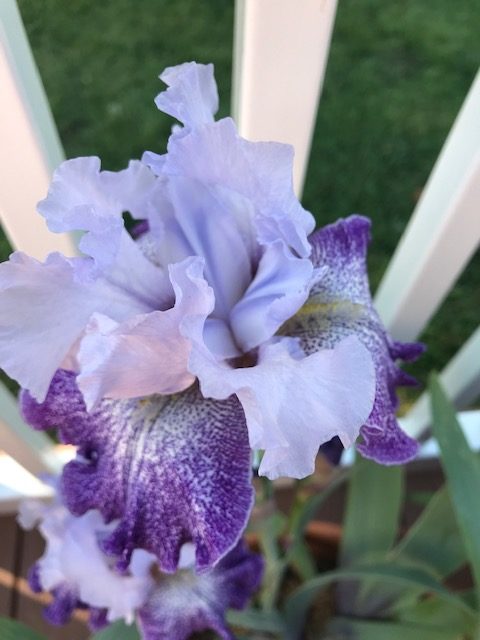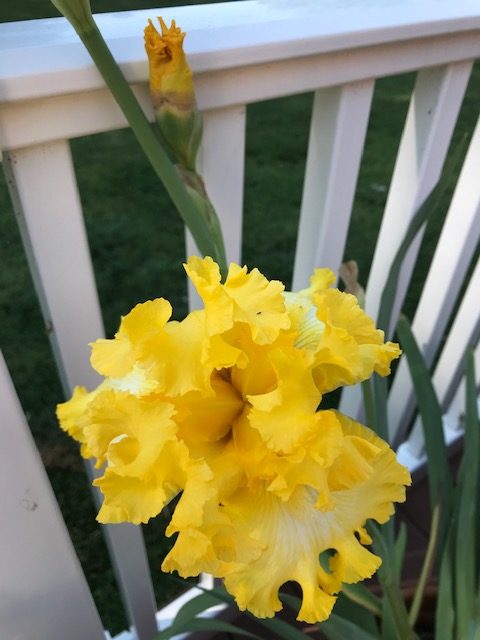My Adventures With Iris
go.ncsu.edu/readext?677977
en Español / em Português
El inglés es el idioma de control de esta página. En la medida en que haya algún conflicto entre la traducción al inglés y la traducción, el inglés prevalece.
Al hacer clic en el enlace de traducción se activa un servicio de traducción gratuito para convertir la página al español. Al igual que con cualquier traducción por Internet, la conversión no es sensible al contexto y puede que no traduzca el texto en su significado original. NC State Extension no garantiza la exactitud del texto traducido. Por favor, tenga en cuenta que algunas aplicaciones y/o servicios pueden no funcionar como se espera cuando se traducen.
Português
Inglês é o idioma de controle desta página. Na medida que haja algum conflito entre o texto original em Inglês e a tradução, o Inglês prevalece.
Ao clicar no link de tradução, um serviço gratuito de tradução será ativado para converter a página para o Português. Como em qualquer tradução pela internet, a conversão não é sensivel ao contexto e pode não ocorrer a tradução para o significado orginal. O serviço de Extensão da Carolina do Norte (NC State Extension) não garante a exatidão do texto traduzido. Por favor, observe que algumas funções ou serviços podem não funcionar como esperado após a tradução.
English
English is the controlling language of this page. To the extent there is any conflict between the English text and the translation, English controls.
Clicking on the translation link activates a free translation service to convert the page to Spanish. As with any Internet translation, the conversion is not context-sensitive and may not translate the text to its original meaning. NC State Extension does not guarantee the accuracy of the translated text. Please note that some applications and/or services may not function as expected when translated.
Collapse ▲I have always loved Iris and in the past have tried to grow them a few times with limited success. The plants either died over the winter or I would have foliage, but no flowers.
This last fall I decided to approach the Iris in a different way. I researched and found that I was:
1. Planting the rhizomes too deep so they would never produce flowers.
2. I did not ensure good drainage.
My first thought was to check the N.C. Cooperative Extension of Cabarrus County page to find out what I need to do to be successful with my next planting. My next thought was to buy plants or rhizomes from a reputable Iris breeder instead of a big box store or asking for plants from a neighbor.
Now it is time to plant. Well, not quite. I needed to send a soil sample to N.C. Department of Agriculture and Consumer Services Soil Lab to check the pH of my soil. You can get a soil sample box at your local Extension office as well and instructions on how to get a sample and how to send it to the lab in Raleigh. This is important because Iris like slightly acidic soil with a pH of 6.8. When you get your report back you can determine what you need to do to achieve this level.
Now it is time to plant. Well, not quite. Take some time to ensure you are planting your Iris in a place they will love. This means choosing a place that gets full sun or a little afternoon shade. After you have selected your spot, now is the time to ensure the plants will have good drainage. You can ensure this by creating a raised bed or amending the soil with compost so water will not stand around the roots.
Now is the time to plant. When you plant your Iris plant them 12 to 24 inches apart (they like air movement). In the center of our hole mound up a little soil and set the rhizomes on top so the roots flow down the sides of the mound. Be sure that you do not cover the entire rhizomes with soil. The top of the rhizomes must be showing on top of the soil. If you plant too deep, you will not get flowers.
A few more tips. Iris would rather be too dry than too wet. Label your plant because everyone will want to know the names when they see your awesome flowers. Before winter sets in, cut your Iris back so you have a few inches of fan left and put a protective layer of straw or pine needles over them for protection.
Iris are fairly easy to raise but there are a few things to look out for. Root rot, Iris borer, and leaf spot are the main things that could affect your plants. Talk to your extension agent or search the NC State Extension site for these conditions.
Happy planting.







